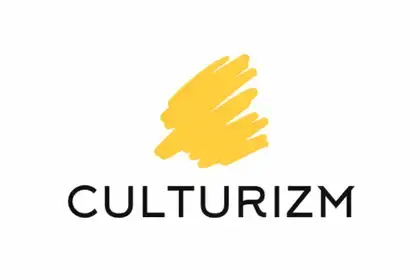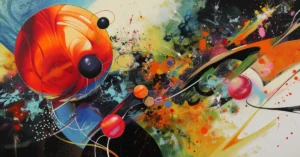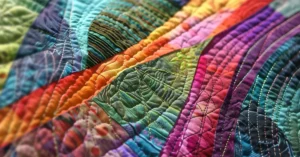Contemporary Indian art is a reflection of the country’s diverse culture and rich heritage, offering a unique and vibrant perspective that has captured the attention of audiences worldwide. With a fusion of traditional techniques and modern perspectives, Indian artists have created a dynamic art landscape that is both captivating and thought-provoking. From the bold and colorful paintings of MF Husain to the intricate sculptures of Ravinder Reddy, contemporary Indian art showcases a range of styles and techniques that reflect the country’s complex history and diverse society.
What is the Genesis of Contemporary Indian Art?
The Bengal School of Art played a significant role during the colonial era, encompassing the richness of India’s artistic heritage while integrating modern artistic sensibilities.
Contemporary Indian art is a fusion of diverse perspectives and techniques, giving birth to a vibrant and dynamic art landscape that continues to captivate audiences. Embrace the creativity, depth, and vision that contemporary Indian art has to offer. Contemporary Indian art techniques are diverse and include traditional Indian art forms fused with modern techniques, such as street art, installation art, digital art, and mixed media. Additionally, popular contemporary Indian art styles include watercolor, oil, ink wash, and acrylic painting.
In the late 19th and early 20th centuries, the Swadeshi Movement emerged as a response to British colonialism, propelling Indian art towards self-reliance and promoting indigenous art forms. Raja Ravi Varma, a trailblazer of this period, used European academic styles to depict Indian themes and subjects, thereby laying the foundation for a unique visual language in Indian art.
The influence of the Tagore family, particularly Rabindranath Tagore and Gaganendranath Tagore, cannot be underestimated when exploring the beginnings of contemporary Indian art. Rabindranath Tagore, a renowned poet, painter, and thinker, brought a fresh perspective to Indian art by transcending traditional boundaries and encouraging experimentation.
Gaganendranath Tagore, on the other hand, embraced modernism and explored diverse artistic styles such as Cubism and Expressionism, integrating them with Indian artistic sensibilities. His contributions helped Indian artists break free from the strict confines of academic realism and embark on a journey of innovation and self-discovery.

IG: ahir.nirav.315
Did Waves of Modernism Shaped the Contemporary Indian Art the Most?
The Progressive Artists’ Group, founded in 1947, brought together a group of forward-thinking individuals including M. F. Husain, F. N. Souza, and S. H. Raza. Their collective vision aimed to break free from traditional styles and incorporate innovative techniques, thus redefining Indian art. They drew inspiration from Western modern art while still maintaining a deep connection to their cultural roots.
M. F. Husain, known as the “Picasso of India” became a central figure in the Indian modern art movement. His works captivated audiences with their bold use of color and striking subjects. F. N. Souza, another pivotal artist, painted expressionistic portraits that emphasized the human form’s innate beauty. In contrast, S. H. Raza, an abstract artist, focused more on the spiritual, drawing on geometric patterns to symbolize India’s rich cultural heritage.
Art Forms and Techniques
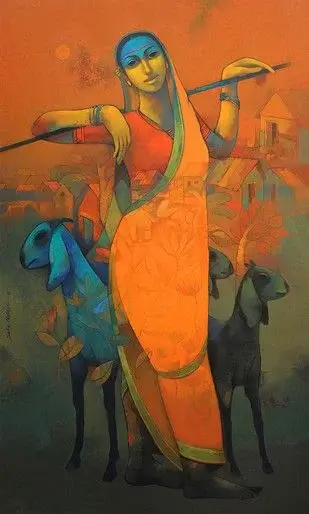
Contemporary Indian art has explored various art forms and techniques to create stunning visual experiences.
In the world of painting, oil paintings have continued to be prominent, with artists experimenting with different styles and subject matters. Watercolor paintings give artists a unique way to depict the natural beauty of India’s landscapes and people. Along with painting, sculpture has also evolved in contemporary Indian art, blending traditional craftsmanship with modern materials and techniques.
Photography has gained popularity as a medium to capture the essence of India’s diverse culture. From stunning architectural wonders to colorful street scenes, contemporary Indian photography presents the country’s spirit through captivating imagery. Installation and performance art have also found their place in India’s modern creative scene. These art forms often utilize unconventional materials and spaces, engaging audiences in immersive and interactive experiences.
Closely related to performance art, video art often explores contemporary themes, utilizing technology to combine moving images with sound, creating dynamic and thought-provoking pieces. These mediums encourage discussion and reflection on India’s evolving society and global identity.
Leading Artists and Their Works
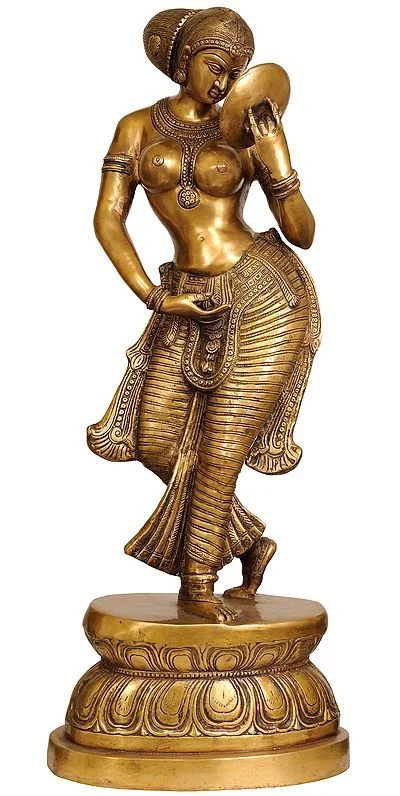
Contemporary Indian art has been thriving and gaining recognition on the world stage. Many pioneering artists have emerged over time, contributing to the rich tapestry of Indian art and culture.
Tyeb Mehta, one of India’s most celebrated modern artists, is known for his powerful paintings tackling themes of violence and anguish, often drawing inspiration from the Partition and the Mahabharata. One of his iconic works is the “Falling Figure” series, which poignantly captures the essence of human vulnerability.
Subodh Gupta, often referred to as the “Damien Hirst of Delhi” is a versatile artist who works in various mediums, including sculpture, installation, and painting. His signature style revolves around re-purposing everyday objects to create stunning art pieces. “Spill,” a stainless steel sculpture of a gigantic spilled milk bucket, is one of his widely recognized works.
Amrita Sher-Gil, a pioneer in modern Indian art, was known for her revolutionary approach to painting and her blending of Eastern and Western styles. One of her most admired paintings is “T̶h̶r̶e̶e̶ ̶G̶i̶r̶l̶s̶,” depicting three women in traditional Indian attire.
Sheela Gowda‘s art often focuses on social and political issues through various forms such as painting, sculpture, and installations. Her thought-provoking piece “And…”, made of braided human hair and car bumpers, reflects upon the interdependence between humans and the environment.
Nikhil Chopra is a performance artist who combines elements of theatre, painting, drawing, and photography. One of his memorable performances, “Yog Raj Chitrakar: Memory Drawing IX,” involved Chopra transforming into multiple characters over the course of nine days and creating a panoramic landscape in the process.
Shilpa Gupta is a multimedia artist whose works traverse photography, sculpture, installations, and sound. An example of her engaging art is the interactive installation entitled “WheredoIendandyoubegin,” which invites viewers to question boundaries and connections inscribed in the world around us.
These artists represent just a small portion of the immense talent and diversity within the contemporary Indian art scene.
FAQ
What are the contemporary performing arts in India?
The contemporary performing arts in India include theatre, dance, music, and film. These art forms have a rich history and continue to evolve with new styles and techniques.
What are the characteristics of Indian contemporary art?
Indian contemporary art is characterized by a multifaceted approach, incorporating neo-abstract and post-modernist practices. It is a kaleidoscope of colors, shapes, components, and compositions that reflect the cultural and religious diversity of India.
What is the 7 major contemporary art?
The seven major contemporary art forms are painting, sculpture, architecture, poetry, music, literature, and dance.
Who started contemporary art in India?
The origins of contemporary art in India can be traced back to the 1940s and 1950s when a group of artists began to experiment with new forms and styles. However, it is difficult to attribute the start of contemporary art in India to a single individual or group.
If you liked this blog post about the topic: “Contemporary Indian Art”, don’t forget to leave us a comment down below to tell us about your experience with it.
If you want to keep reading more from us, have a look at these articles.
